Runaway stars may create the mysterious ultraviolet glow around some galaxies0
- From Around the Web, Space
- December 1, 2020
The bright, young stars are located in regions where gas is too tenuous for new stars to form
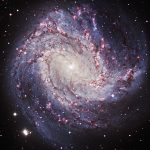
The bright, young stars are located in regions where gas is too tenuous for new stars to form

According to new research using data from NASA’s retired planet-hunting mission, the Kepler space telescope, about half the stars similar in temperature to our Sun could have a rocky planet capable of supporting liquid water on its surface.
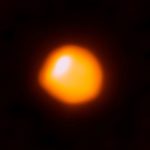
Using new observational data from the space-based Solar Mass Ejection Imager and three different modeling techniques, astronomers have found that Betelgeuse, a red supergiant in the constellation of Orion, has a radius of about 764 solar radii, a mass between 16.5 and 19 solar masses, and is 548 light-years away.
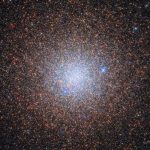
Called RBC EXT8, the cluster challenges some theories of how galaxies form and evolve
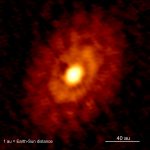
It looks like we may have to update our theories on how stars and planets form in new solar systems.
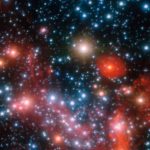
The Milky Way’s core harbors two giants: the galaxy’s largest black hole and a cluster of tens of millions of stars around the black hole that is denser and more massive than any other star cluster in the galaxy.
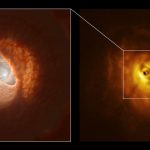
Groups of stars can tear their planet-forming disk to shreds, leaving behind warped, misaligned rings, scientists find in a breakthrough study.
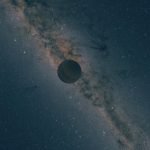
Free-floating, or rogue, exoplanets — free-floating planetary-mass objects that do not orbit a star and instead travel through space — could be surprisingly common in our Milky Way Galaxy; and NASA’s upcoming Nancy Grace Roman Space Telescope (Roman) will detect at least 250 such free-floating planets with masses down to that of Mars, according to a new paper published in the Astronomical Journal.

A mystery surrounding the space around our solar system is unfolding thanks to evidence of supernovae found in deep-sea sediments.
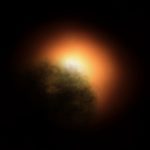
The red supergiant Betelgeuse is one of the brightest stars in the night sky and appears even more luminous because it is so close to Earth, only 650 light-years away. But the star also periodically changes in brightness, which was first noted in the 1830s by the British astronomer John Herschel. Betelgeuse experienced an unexpected dimming during December 2019 and the first quarter of 2020, reaching an historic minimum on February 7-13. This dimming has mystified astronomers, who scrambled to develop several theories for the abrupt change. Ultraviolet observations by the NASA/ESA Hubble Space Telescope suggest that the dimming was probably caused by an immense amount of superhot material ejected into space. The material cooled and formed a dust cloud that blocked the starlight coming from about a quarter of Betelgeuse’s surface.